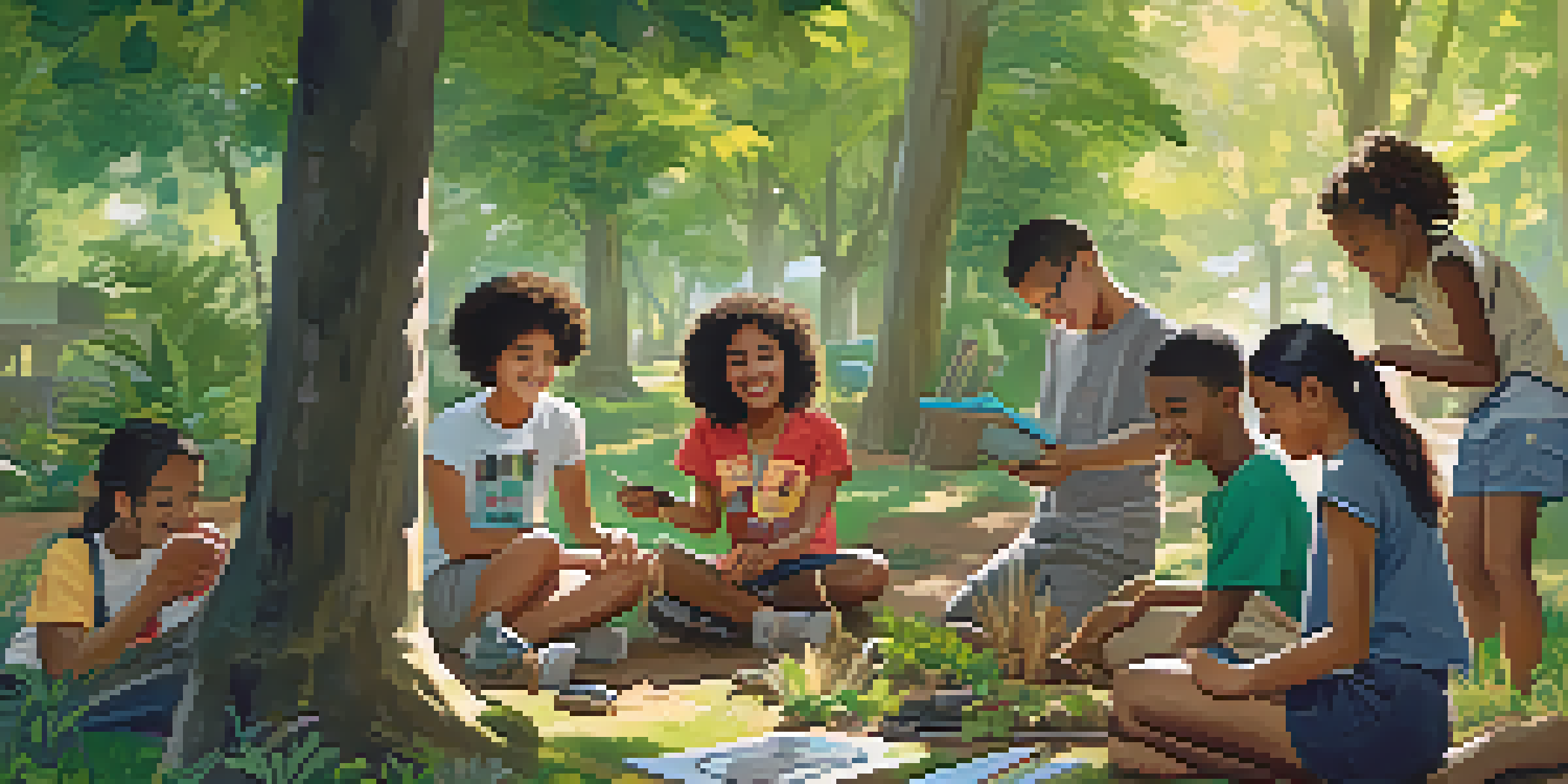Engaging Rochester's Youth in Environmental Conservation Efforts

Understanding the Importance of Youth Engagement
Engaging youth in environmental conservation is vital for creating a sustainable future. Young people are not only our future leaders but also possess the energy and creativity needed to tackle environmental issues. By involving them in these efforts, we cultivate a sense of responsibility and stewardship towards the planet.
The youth of today are the leaders of tomorrow.
Moreover, youth engagement helps to foster a deeper understanding of environmental issues. When young people actively participate in conservation activities, they learn about ecosystems, biodiversity, and climate change firsthand. This experiential learning is often more impactful than traditional classroom education.
Lastly, engaging youth can lead to innovative solutions to environmental challenges. Fresh perspectives can spark new ideas, making conservation efforts more effective. By tapping into the unique insights of young people, Rochester can enhance its environmental initiatives and inspire a new generation of eco-warriors.
Creating Exciting Education Programs
To captivate Rochester's youth, education programs must be engaging and interactive. Hands-on activities such as outdoor workshops, nature hikes, and community clean-ups can significantly enhance a young person's connection to nature. These experiences not only teach valuable skills but also make learning fun.

Incorporating technology into these programs can also boost engagement. For instance, using apps for tracking wildlife sightings or participating in citizen science projects can make conservation efforts feel modern and relevant. Young people are digital natives, and leveraging technology can help bridge the gap between them and environmental issues.
Engaging Youth for a Sustainable Future
Involving young people in environmental conservation cultivates responsibility and innovative solutions for our planet.
Furthermore, partnering with local schools and educational institutions can amplify these efforts. Collaborative projects that align with school curricula can make conservation a part of students' everyday learning, ensuring that the message resonates. By working together, we can create a robust framework for environmental education in Rochester.
Utilizing Social Media for Outreach
Social media is a powerful tool for reaching Rochester's youth. Platforms like Instagram, TikTok, and Snapchat are where young people spend a significant portion of their time. By creating engaging content that highlights conservation efforts, organizations can capture their attention and inspire action.
The best way to predict the future is to create it.
Sharing success stories, environmental tips, and upcoming events through social media can foster a sense of community among young environmentalists. When youth see their peers actively participating in conservation, they are more likely to get involved themselves. This peer influence can be a strong motivator for action.
Additionally, hosting social media challenges or campaigns can encourage youth participation. For example, a clean-up challenge that encourages participants to share their efforts online can create a fun and competitive atmosphere. This not only spreads awareness but also empowers young people to take initiative.
Building Community Partnerships
Creating strong community partnerships is key to successful youth engagement in conservation. Local businesses, non-profits, and government agencies can collaborate to provide resources and support for environmental initiatives. By pooling their strengths, these partnerships can create a more significant impact.
For instance, businesses can sponsor events or provide materials for projects, while non-profits can offer expertise and volunteers. This collaborative approach not only enriches the programs but also demonstrates the community's commitment to environmental stewardship. It helps youth see that conservation is a shared responsibility.
Interactive Education Programs Matter
Hands-on activities and technology integration in education programs enhance youth connection to nature and conservation.
Moreover, involving families in these partnerships can strengthen the message. When parents participate alongside their children, it reinforces the importance of conservation at home. This family involvement can lead to a culture of sustainability that extends beyond individual efforts.
Encouraging Volunteerism Among Youth
Volunteer opportunities are a fantastic way to engage Rochester's youth in environmental conservation. By participating in hands-on projects, young people can make a tangible impact while learning valuable skills. Whether it's tree planting, habitat restoration, or community gardening, these activities provide a sense of accomplishment.
Moreover, volunteering can foster a community spirit that motivates youth to stay involved. When they see the direct results of their efforts, it can ignite a passion for environmental stewardship. This sense of belonging is crucial for developing long-term commitment to conservation.
Additionally, recognizing and celebrating youth volunteers can encourage others to join. Awards, shout-outs on social media, or community events honoring their contributions can help them feel valued. Acknowledgment can be a powerful driver for participation and continued engagement.
Incorporating Environmental Themes in Arts and Culture
Art and culture can play a significant role in engaging youth in environmental conservation. Creative expressions such as murals, music, and theater can convey powerful messages about the importance of protecting our planet. By incorporating environmental themes into cultural events, Rochester can inspire young people's creativity and activism.
For example, hosting an art contest focused on environmental topics encourages youth to express their views creatively. Such initiatives can spark discussions about conservation issues and motivate participants to take action. Art has a unique ability to connect with people on an emotional level, making the message resonate more deeply.
Community Partnerships Boost Impact
Collaborating with local organizations strengthens youth engagement efforts and fosters a shared commitment to environmental stewardship.
Furthermore, collaborating with local artists and cultural organizations can enhance these efforts. Workshops and events that blend art with environmental education can create a vibrant community atmosphere. By showcasing youth talent in this context, we can encourage them to take pride in their environmental efforts.
Providing Mentorship and Leadership Opportunities
Mentorship is a pivotal aspect of engaging youth in environmental conservation. By connecting young people with experienced mentors in the field, we can provide guidance and support as they navigate their conservation journeys. This relationship can foster confidence and inspire them to take on leadership roles.
Leadership opportunities within environmental programs can empower youth to make a difference. When they have the chance to lead projects or initiatives, it instills a sense of ownership and responsibility. This empowerment is critical for developing the next generation of environmental leaders in Rochester.

Additionally, creating youth councils or clubs focused on environmental issues can serve as a platform for young voices. These groups can advocate for change within their communities and collaborate on conservation projects. By giving them a seat at the table, we encourage active participation and investment in environmental stewardship.